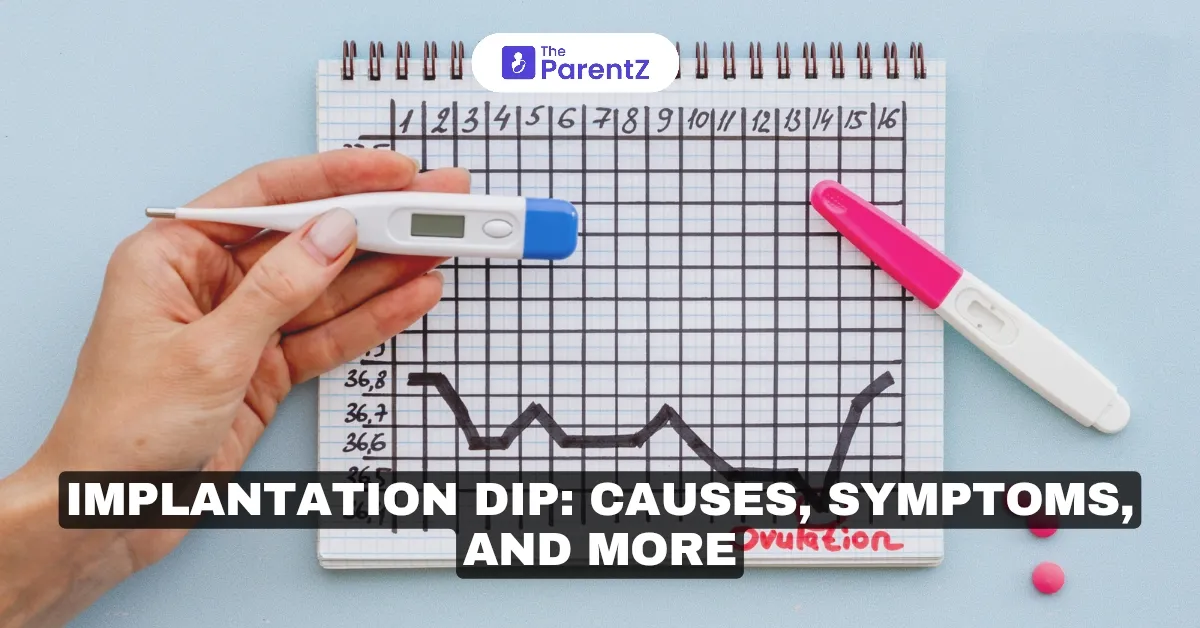Trying to conceive can feel overwhelming, and every little change in your body may leave you wondering—is this a sign of pregnancy? One such sign among hopeful parents is the implantation dip—a temporary drop in basal body temperature (BBT) that some women notice before a missed period.
But is implantation dip a reliable pregnancy indicator, or just another fluctuation in your cycle?
Read this article to learn about the causes, symptoms, and what implantation dip actually means.
What Is an Implantation Dip?
Implantation dip refers to a one-day drop in basal body temperature (BBT) that occurs around 6 to 12 days past ovulation (DPO)—just before implantation. This dip is believed to be associated with hormonal changes during early pregnancy. However, it doesn’t happen to everyone.
What Causes an Implantation Dip?
There is no definitive scientific explanation for implantation dip, but two key hormonal changes might contribute to this temporary drop in temperature, including
Estrogen Surge
Around implantation, estrogen levels briefly rise, which can lower body temperature for a day.
Progesterone Shift
Progesterone maintains a higher BBT post-ovulation, but a small fluctuation can cause a temporary dip. If implantation occurs, progesterone rises again.
Since implantation happens 6-12 days post-ovulation, this is typically when a dip may be observed. However, some women have BBT dips unrelated to pregnancy, making it an unreliable confirmation method.
Symptoms That May Accompany an Implantation Dip
If an implantation dip is linked to pregnancy, it may come with early pregnancy symptoms, including:
- Light spotting or implantation bleeding: Around 25 percent of women experience light pink or brown spotting when the fertilized egg attaches to the uterine lining.
- Mild cramping: Some women report lower abdominal cramps similar to period pain.
- Breast tenderness: Due to rising progesterone, breasts may feel swollen or sensitive.
- Increased fatigue: Early pregnancy hormones can make you feel unusually tired.
- Heightened sense of smell or nausea: Some women notice food aversions or increased sensitivity to smells even before a missed period.
Also, if you notice a dip in temperature along with these early pregnancy signs, there’s a chance you could be pregnant. However, the only reliable way to confirm pregnancy is a home pregnancy test or blood test.
Is Implantation Dip a Reliable Pregnancy Indicator?
While some women swear by implantation dip as an early pregnancy clue, scientific studies have not proven its accuracy. In fact, research found that BBT charts alone are not a reliable method for detecting pregnancy.
Moreover, the fact is— not all pregnant women experience an implantation dip, and not all women who see an implantation dip are pregnant.
This is because BBT can fluctuate for many reasons, including stress, illness, or normal hormonal shifts.
So, the most accurate way to confirm pregnancy is to take a pregnancy test after a missed period.
Conclusion
Implantation dip is an interesting phenomenon, but it’s not a foolproof pregnancy sign. While it may occur in some women due to hormonal fluctuations, it is not a guaranteed indicator of implantation or pregnancy.
If you’re trying to conceive, tracking your BBT can provide insight into ovulation and cycle patterns, but it should not replace a home pregnancy test or doctor’s confirmation.








Be the first one to comment on this story.